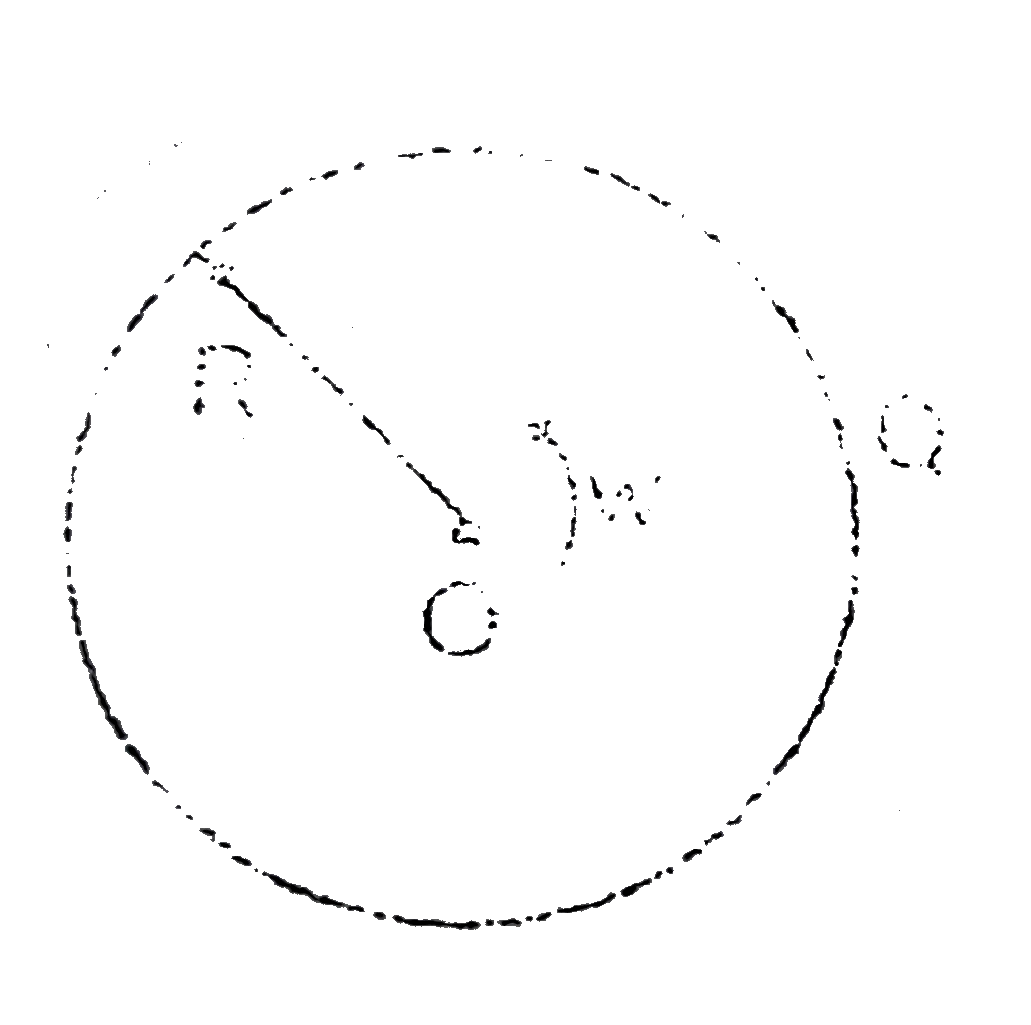shows a conducting disc rotating about its axis in a perpendicular magnetic field B. A resistor of resistance R is connected between the centre and the rim. Calculate the current in the resistor. Does it enter the disc or leave it at the centre? The radius of hte disc is 5.0 cm , angular speed ω=10rads,B=0.40T and R=10Ω.
 Solution in Tamil
Solution in Tamil
Here B=0.10T, omega=10 rad//s<br>R=10 Omega, r=5 cm=0.5m<br>Considering a rod rotating with the same omega,<br>theta =(1/2)xxomega=(0.05)/(2)xx10<br>theta =Blv<br>=0.40xx(0.05/2)xx10xx0.05<br>=5xx10^(-3)V.<br>i=R=(theta/R)<br>=(5xx10^(-3))/(10)=0.5 mA.<br>It leaves from the center..
Topper's Solved these Questions
- BOOK - HC VERMACHAPTER - ELECTROMAGNETIC INDUCTIONEXERCISE - Objective 210videos
ELECTROMAGNETIC INDUCTION
- BOOK - HC VERMACHAPTER - ELECTRIC FIELD AND POTENTIALEXERCISE - Exercises75videos
ELECTRIC FIELD AND POTENTIAL
- BOOK - HC VERMACHAPTER - ELECTROMAGNETIC WAVESEXERCISE - Exercise9videos
ELECTROMAGNETIC WAVES
Similar Questions
A bar magnet is moved along the axis of a copper ring placed far away from the magnet. Looking from the side of the magnet, an anticlockwise current is found to be induced in the ring. Which of the following may be true?
02:38View SolutionFind the dimensional formula of ε0 .
08:03View SolutionShow that the dimensions of the displacement current (ε0dΦEdt) are that of an electric current.
03:20View SolutionA conducting disc of radius r rotates with a small but constant angular velocity ω about its axis. A uniform magnetic field B exists parallel to the axis of rotation. Find the motional emf between the centre and the periphery of the disc.
01:53View SolutionA metal disc of radius R = 25 cm rotates with a constant angular velocity omega = 130 rad s^(-1) about its axis. Find the potential difference between the center and rim of the disc if (a) the external magnetic field is absent, (b) the external uniform megnetic field B = 5.0 mT directed perpendicular to the disc.
06:38View Solutiona conducting disc of radius R roatates about its axis when an angular velocity omega .Then the potential difference between the centre of the disc and its edge is (no magnetic field is present ):
03:08View SolutionA metal disc of radius R rotates with an angular velcoity ω about an axis perpendicular to its plane passing through its centre in a magnetic field B acting perpendicular to the plane of the disc. Calculate the induced emf between the rim and the axis of the disc.
02:03View SolutionA non-conducting disc having unifrom positive charge Q , is rotating about its axis with unifrom angular velocity omega .The magnetic field at the centre of the disc is.
04:33View SolutionFigure shows a conducting disc rotating about its axis in a perpendicular uniform and constant magnetic field B. A resistor of resistance R is connected between the centre and the rim. The radius of the disc is 5.0 cm, angular speed ω=40rad/s,B=0.10T and R=1Ω. The current through the resistor is
 02:15View Solution
02:15View SolutionA metal disc of radius , a =10 cm rotates with a constant angular speed of ω=200rad/s about its axis.
The potential difference between the centre and the rim of the disc under a uniform magnetic field, B= 5 mT directed perpendicular to the disc, is05:28View SolutionThe following figure a conducting disc rotating about its axis in a perpendicular magnetic field B. The resistor of resistance R is connected between the centre and the rim. The current in the resistor is (The radius of the disc is 5.0 cn=m, angular speed omega=10 rad s^(-1) , B = 0.40 T and R = 10 Omega )
06:25View SolutionA conducting disc of radius r rotaes with a small but constant angular velocity ω about its axis. A uniform magnetic field B exists parallel to the axis of rotation. Find the motional emf between the centre and the periphery of the disc.
06:45View SolutionA circular metalic disc of radius a is rotating with a uniform angular velocity (w) perpendicularly to the uniform magnetic field →B. The potential difference between the centre and the rim of the disc is—
02:36View SolutionA metal disc of radius R = 25 cm rotates with a constant angular velocity omega = 130 rad s^(-1) about its axis. Find the potential difference between the center and rim of the disc if (a) the external magnetic field is absent, (b) the external uniform magnetic field B = 5.0 mT directed perpendicular to the disc.
03:00View SolutionA non-conducting disc having unifrom positive charge Q, is rotating about its axis with unifrom angular velocity ω.The magnetic field at the centre of the disc is.
 04:22View Solution
04:22View SolutionFigure shows a conducting disc rotating about its axis in a perpendicular uniform and constant magnetic field B. A resistor of resistance R is connected between the centre and the rim. The radius of the disc is 5.0 cm, angular speed omega=40 rad//s, B=0.10 T " and " R=1 Omega . The current through the resistor is
01:33View Solution

